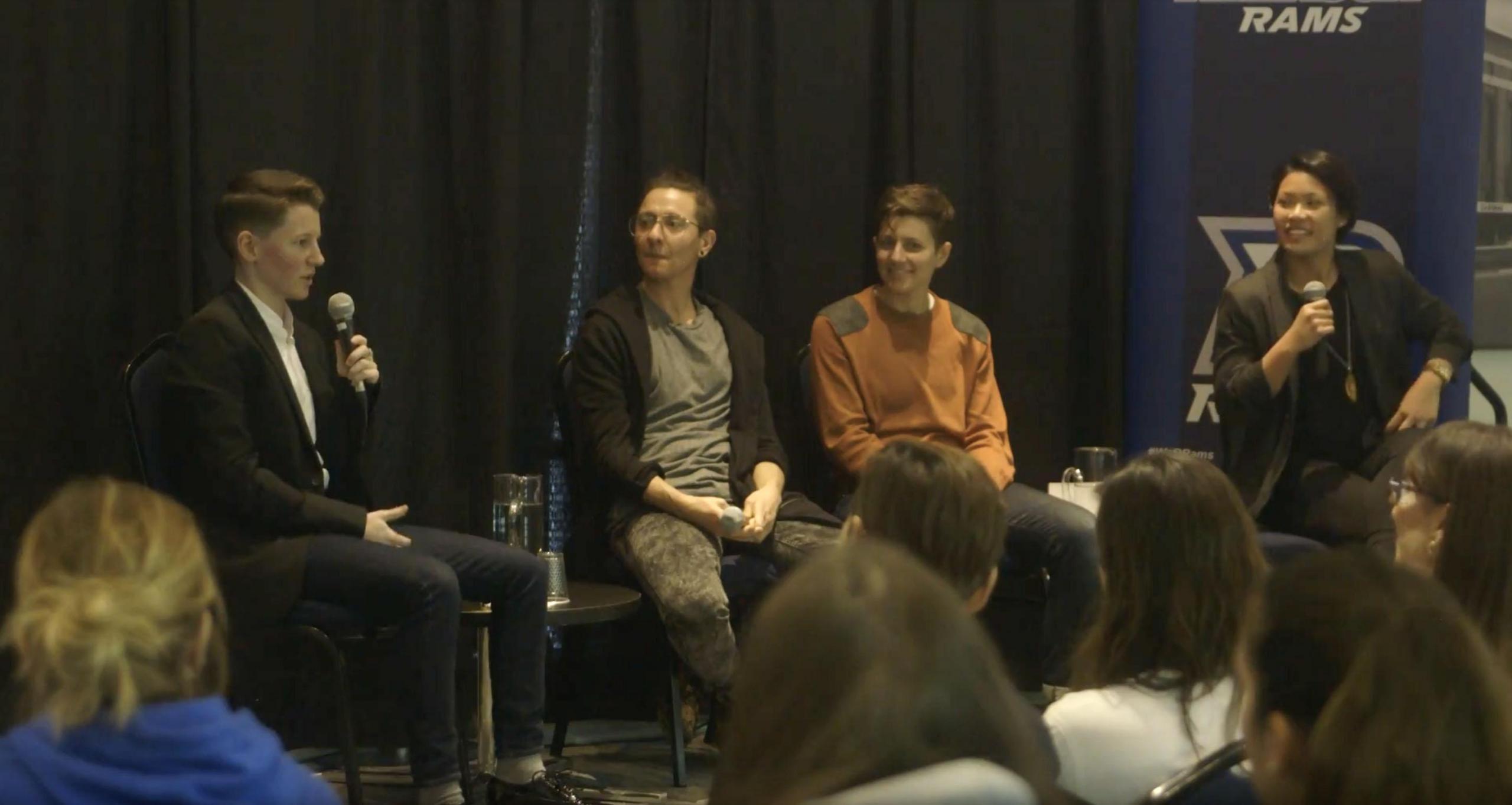By Virginie Tanguay
Transgender advocates and athletes part of the Trans Inclusion in Sport panel held at Ryerson urged students and faculty to ask themselves who’s missing from their sports teams, their games and their gyms.
And most importantly: why?
Harrison Browne, a left-winger for the National Women’s Hockey League’s (NWHL) Buffalo Beauts, is the first publicly trans player in the history of professional hockey in North America.
“Hockey was very much an escape for me,” the keynote speaker told a room full of athletes and athletic faculty Monday at the Mattamy Athletic Centre. “You see, playing a sport gives you a certain title that’s not gendered. You’re an athlete. A hockey player.”
While playing for Maine University, Browne publicly came out as a transgender man, an identity his teammates embraced.
“They all had my back. They were my second family, and they made it easy for me to live authentically,” he said.
Faced with what he referred to as the toughest decision of his life, Browne chose to pursue hockey over taking testosterone and physically transitioning, which the National Collegiate Athletic Association does not allow to happen simultaneously.
Not ready to come out to his professors and school administration, Browne came out about three years later during his second season playing professionally. Faced with an absence of role models, and unsure of how to proceed, Browne sent an email requesting a name change to the league’s office, which acted quickly to implement the change.
“There was no turning back. My identity was out for everybody,” he said. “What was surprising was the amount of support I received, and that support was tangible.”
Browne recognizes his own luck in finding himself in a welcoming community but transgender people are often excluded from sports.
“Sport is inherently tied to misogyny, the patriarchy and sexism,” said Barb Besharat, a member of a working committee focused on creating trans inclusivity in sport for the Canadian Centre for Ethics in Sport.
“It’s the entire reason why organized sport exists—to create men out of boys,” said Besharat, who uses they/them pronouns. “What leads to some challenges in doing this professionally is the belief that there is an inherent difference between men and women.”
As a result of this past summer’s implementation of Bill C-16, discrimination on the grounds of gender expression or identity is now illegal. That also includes preventing trans people from playing sports.
But even if trans people are accepted as athletes, they must still conform to some rather rigid ideas of masculinity or femininity in order to play. It’s one of the reasons why Ryerson is working toward implementing trans-only gym programming at the university’s workout facilities.
“It’s about breaking down these myths in sport, why some bodies perform better than other bodies. Everybody wants to make sport fair, but nobody wants to tie all the time, so what does fairness in sport mean?” said Besharat.
While the discussion of taking inclusivity to the degree of eliminating the gendering of sports altogether seems like a big step, the panellists said it’s important for cisgender people (those identifying with their ascribed gender) to explore these ideas, which are often foreign to them.
“Take a look at who you are surrounded by,” said Christine Hsu, the panel’s moderator and a fellow member of the trans inclusivity working committee. “Think about diversity. Think about who is not here.”
And it’s up to those with the most power to lift up those who are more marginalized.
“Being an ally is not an identity. Being an ally is an action,” said Chris Spiess, a non-binary mental health counsellor and long-time martial arts athlete. “Being an ally means not having the one experiencing transphobia to be the one calling it out all the time.”










Leave a Reply